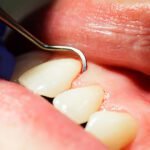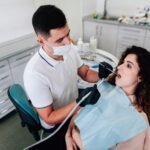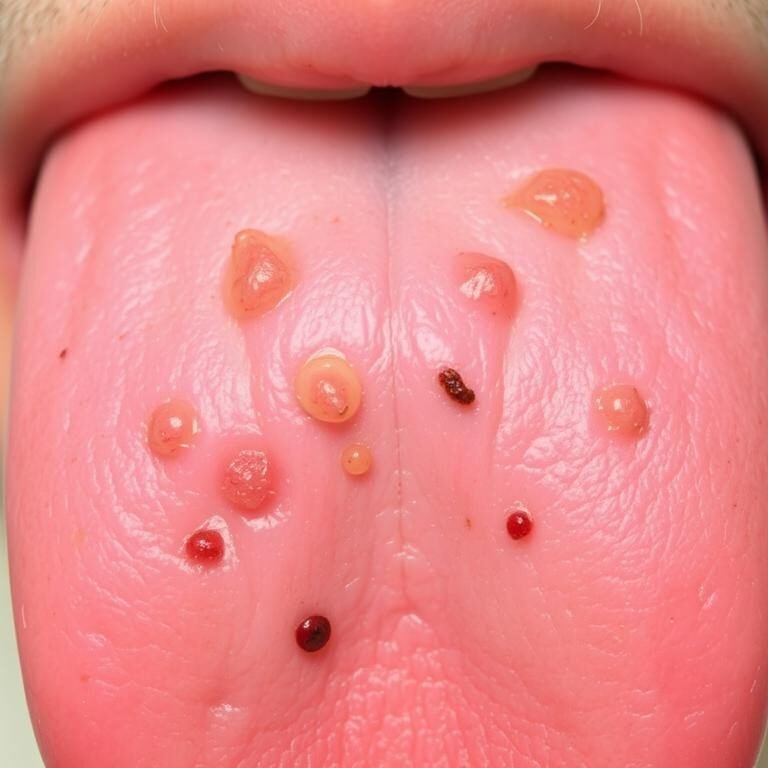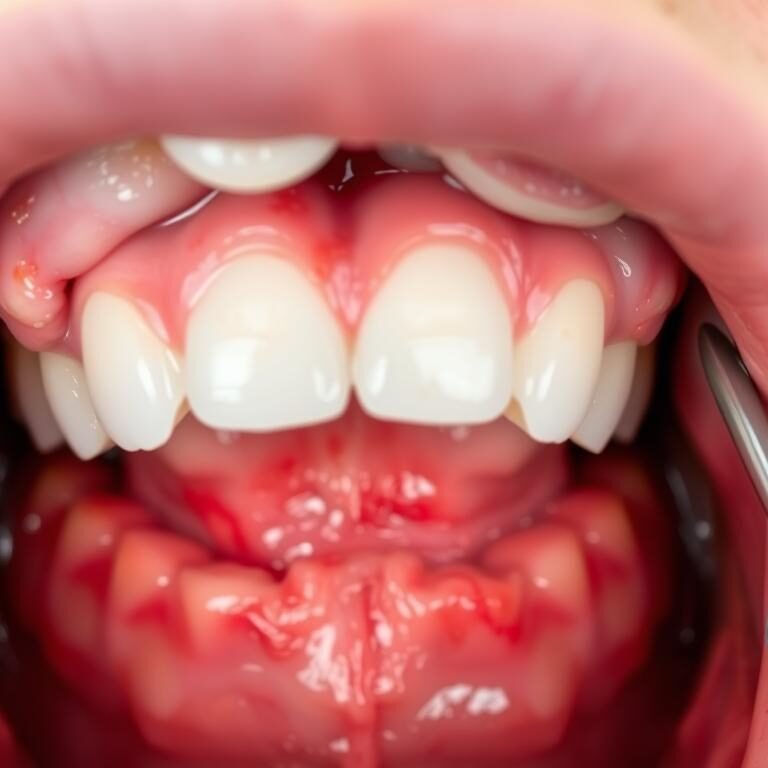Table of Contents
Understanding Dental Injuries: Causes and Types

Dental injuries can occur for a variety of reasons, and understanding the causes and types is crucial in order to prevent and effectively treat these injuries. One of the most common causes of dental injuries is trauma, which can result from accidents, falls, or sports-related incidents. In fact, sports-related injuries account for a significant number of dental injuries in both children and adults.
Moreover, dental injuries can also be caused by biting down on hard objects, such as ice, pens, or popcorn kernels, as well as from dental procedures gone wrong. Additionally, certain medical conditions, such as bruxism (teeth grinding), can lead to dental injuries over time. Understanding the various causes of dental injuries is important in order to implement preventive measures and reduce the risk of such incidents occurring.
When it comes to the types of dental injuries, they can vary in severity and affect different parts of the teeth, gums, or jaw. One common type of injury is a tooth fracture, which can involve the enamel, dentin, or even the pulp of the tooth. Another type is a tooth avulsion, which occurs when the tooth is completely knocked out of its socket. Additionally, dental injuries can include tooth displacement, root fractures, or injuries to the surrounding soft tissues. Recognizing the different types of dental injuries is crucial for proper diagnosis and determining the most appropriate treatment approach.
Understanding the causes and types of dental injuries provides valuable insights for both prevention and treatment. By taking necessary precautions and seeking immediate dental care when injuries occur, individuals can minimize the impact of dental injuries and ensure optimal oral health. In the following sections, we will further explore the signs and symptoms of dental injuries, as well as the immediate steps to take and the importance of seeking emergency dental care.
Recognizing the Signs and Symptoms of Dental Injuries

Dental injuries can occur due to various reasons, such as accidents, sports-related mishaps, or even certain medical conditions. It is crucial for individuals to be able to recognize the signs and symptoms of dental injuries in order to seek prompt and appropriate treatment.
One common sign of dental injury is tooth pain or sensitivity. If you experience sudden or persistent toothache, especially after a traumatic incident, it could indicate a dental injury. Swelling or redness in the gums or face is another important symptom to watch out for. This could suggest an underlying dental problem, such as a fractured tooth or an infection. Additionally, any visible changes in the shape, color, or alignment of the teeth should not be ignored, as they could be indicative of an injury or damage.
Immediate Steps to Take When Dental Injuries Occur
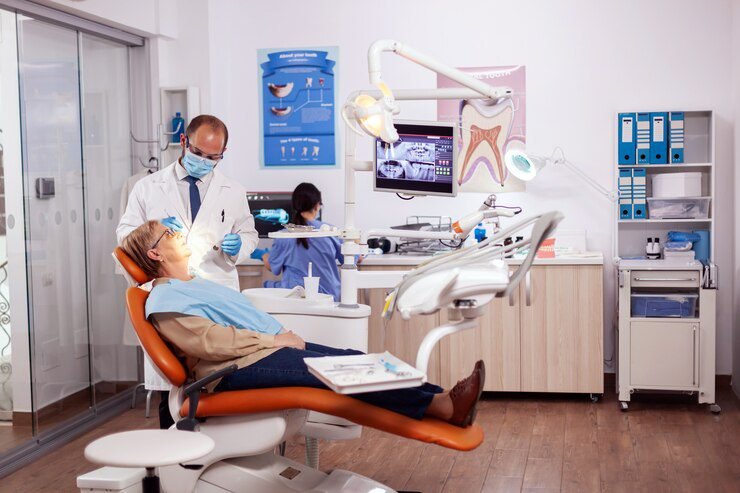
Immediate Steps to Take When Dental Injuries Occur
When a dental injury occurs, it’s important to act swiftly to minimize further damage and ensure the best possible outcome. Here are some immediate steps to take when faced with a dental injury:
1. Stay calm and assess the situation: Dental injuries can be distressing, but it’s crucial to remain calm and think clearly. Assess the extent of the injury and determine if emergency care is required. If there is severe bleeding, intense pain, or a visible break in the teeth or jaw, immediate professional help is necessary.
2. Stop the bleeding: In cases of oral bleeding, apply gentle pressure with a clean cloth or gauze to control the bleeding. Rinse the mouth with warm water to remove any blood or debris. Avoid using aspirin or any blood-thinning medication, as it can prolong bleeding. If the bleeding persists or is excessive, seek immediate dental attention.
Remember, these steps are only meant to address the immediate concerns of a dental injury. Seeking professional dental care as soon as possible is crucial to assess the extent of the injury and provide appropriate treatment. Don’t delay in reaching out to a dentist or emergency dental clinic to ensure the best outcome for your oral health.
Seeking Emergency Dental Care for Dental Injuries
When a dental injury occurs, seeking emergency dental care is crucial to ensure prompt and appropriate treatment. Time is of the essence when it comes to dental injuries, as delays in seeking care can result in further damage and complications. Emergency dental care for dental injuries involves immediate evaluation, diagnosis, and treatment by a dental professional.
Dental injuries can range from minor chips and fractures to more severe cases such as knocked-out teeth or jaw fractures. Regardless of the type and severity of the injury, seeking emergency dental care is essential to mitigate pain and prevent further damage. Prompt intervention can also increase the chances of successful treatment and restoration of the affected teeth.
Upon visiting an emergency dental care provider, the first step is usually a thorough examination to assess the extent of the injury. This may involve X-rays to determine if there are any hidden fractures or damage to the surrounding structures. Based on the assessment, the dentist will develop an individualized treatment plan tailored to the specific needs of the patient.
Whether it’s a chipped tooth, a dislodged tooth, or any other dental injury, seeking immediate dental care is crucial for the best possible outcome. Delaying treatment can lead to not only pain and discomfort but also complications that may require more extensive and costly procedures in the future. By seeking emergency dental care promptly, individuals can ensure that their dental injuries are appropriately treated, restoring both their oral health and peace of mind.
The Importance of Proper Diagnosis for Dental Injuries
Proper diagnosis is essential when it comes to dental injuries. It is not enough to simply recognize that an injury has occurred; understanding the extent and specific nature of the injury is crucial for determining the most appropriate course of treatment.
A thorough examination by a dental professional is necessary to accurately diagnose dental injuries. This examination may involve a variety of diagnostic tools, such as X-rays, imaging techniques, and clinical assessments. By evaluating the affected area and considering the patient’s symptoms, the dentist can determine the exact type and severity of the injury. This information is vital in order to develop an individualized treatment plan that addresses the specific needs of the patient. Without a proper diagnosis, the treatment may not fully resolve the issue or could potentially exacerbate the injury. So, seeking professional guidance for an accurate diagnosis is of utmost importance in ensuring effective and successful treatment.
Treatment Options for Different Types of Dental Injuries
When it comes to dental injuries, the treatment options can vary depending on the type and severity of the injury. In cases of a chipped or cracked tooth, dental bonding or veneers may be recommended to restore the appearance and function of the tooth. These procedures involve the application of a tooth-colored resin or porcelain material to the damaged tooth, creating a natural-looking and durable restoration.
For more extensive damage, such as a severely fractured or displaced tooth, a dental crown may be necessary. A crown is a custom-made cap that fits over the damaged tooth, providing protection and support. This allows the tooth to regain its strength and durability, while also restoring its appearance.
In cases where a tooth is completely knocked out, prompt action is crucial. Dentists may attempt to re-implant the tooth if it is still intact and the patient seeks immediate dental care. If re-implantation is not possible, other treatment options such as dental implants or bridges may be considered to replace the missing tooth and prevent functional and aesthetic issues.
It is important to note that the specific treatment options for dental injuries should always be determined by a qualified dentist or dental specialist after a thorough examination and assessment. The goal is to provide individualized care that addresses the unique needs and circumstances of each patient’s injury.
Here’s a comprehensive overview of treatment options for various types of dental injuries:
| Type of Dental Injury | Treatment Options |
|---|---|
| Fractured or Chipped Tooth | Minor chips or fractures may be repaired with dental bonding or a filling to restore the tooth’s shape and function. Larger fractures may require a dental crown to protect and strengthen the tooth. Severe damage affecting the tooth’s pulp may necessitate root canal therapy to remove infected tissue and prevent infection. Irreparable damage may require tooth extraction followed by replacement options such as dental implants or bridges. |
| Knocked-Out (Avulsed) Tooth | Immediate re-implantation is ideal. If possible, carefully reinsert the tooth into its socket and hold it in place. If not, store the tooth in milk or saliva and seek emergency dental care. Dentists may attempt re-implantation and stabilize the tooth with a splint. |
| Dislodged (Luxated) Tooth | Reposition the tooth back into its socket and stabilize it with a splint. Root canal therapy may be necessary if the tooth pulp is damaged. Severe displacement or fractures may require extraction. Pain management and antibiotics may be prescribed to prevent infection. |
| Tooth Intrusion or Luxation | Immediate dental evaluation is crucial. Treatment may involve repositioning the tooth, splinting, and monitoring for signs of pulp damage or root resorption. Root canal therapy may be needed to address pulp injury or infection. Severe cases may require extraction and replacement with a dental implant or bridge. |
| Dental Trauma with Soft Tissue Injury | Prompt evaluation and treatment are necessary. Soft tissue injuries may require cleaning and suturing to promote healing and prevent infection. Dental interventions, such as repositioning teeth or restorative procedures, may be performed in conjunction with soft tissue management. |
Restoring Damaged Teeth: Dental Restorations for Injuries
Dental injuries can range from minor chips and cracks to more severe fractures and dislodgement of teeth. Fortunately, modern dentistry offers a variety of dental restorations to effectively repair and restore damaged teeth. These restorations not only improve the appearance of the teeth but also restore their function and strength.
One common type of dental restoration for damaged teeth is dental bonding. This procedure involves applying a tooth-colored resin material to the affected tooth, which is then shaped and hardened using a special light. Dental bonding is an effective solution for minor chips and cracks, as it seamlessly blends with the natural tooth enamel and provides a durable and aesthetically pleasing result.
For more extensive damage, dental crowns are often recommended. A dental crown is a custom-made cap that covers the entire tooth, restoring its shape, size, and strength. Crowns are typically made of porcelain or ceramic materials, which mimic the natural translucency and color of a tooth. This type of restoration not only provides structural support but also enhances the appearance of the damaged tooth. In some cases, a dental bridge may be used to replace one or more missing teeth, with dental crowns anchoring the bridge to adjacent teeth.
In addition to dental bonding and crowns, other restorative options, such as dental veneers, dental implants, and dentures, may be considered depending on the extent of the dental injury and the patient’s specific needs. It is important to consult with a qualified dentist who can assess the damage and recommend the most suitable restoration option for restoring your damaged teeth. By investing in dental restorations, you can regain your confident smile and enjoy a functional and healthy set of teeth once again.
Preventive Measures for Dental Injuries in Children
Children are prone to dental injuries due to their active nature and lack of awareness about potential dangers. As a parent or caregiver, it is crucial to take preventive measures to reduce the risk of dental injuries in children. The following are some key strategies to consider:
1. Encourage the use of protective gear: Whether your child is participating in sports or simply riding a bicycle, it is important to ensure they wear the appropriate protective gear. This includes mouthguards, helmets, and face shields, which can significantly reduce the impact of a blow to the face or head.
2. Supervise playtime activities: Active play is important for children’s development, but it’s essential to closely supervise their activities to prevent accidents. Keep a watchful eye on them during outdoor games, playground activities, and even at home to intervene quickly if any potential dangers arise.
By implementing these preventive measures, you can help safeguard your child’s dental health and minimize the chances of dental injuries. It is worth noting that regular dental check-ups and routine oral hygiene practices are also vital in maintaining optimal oral health for children.
Sports Safety: Protecting Teeth from Dental Injuries
Participating in sports is not only a great way to stay active, but it also teaches valuable life skills such as teamwork and discipline. However, it also comes with risks, especially when it comes to dental injuries. Protecting teeth from such injuries is crucial for athletes of all ages. According to statistics from the American Academy of Pediatric Dentistry, sports-related injuries account for a significant number of dental traumas in children and adolescents. Therefore, it is essential to prioritize sports safety to prevent dental injuries and their associated complications.
One of the most effective ways to protect teeth during sports is by wearing a mouthguard. Mouthguards are a crucial piece of protective equipment that can absorb and distribute the force of an impact, reducing the risk of injury. According to a study published in the Journal of the American Dental Association, the use of mouthguards can reduce the incidence of injuries to the teeth and surrounding structures by up to 82%. It is important to choose the right type of mouthguard for your sport, as different activities may require different levels of protection. Custom-fitted mouthguards, made by a dental professional, provide the best fit and offer optimal protection. Remember, investing in a mouthguard is a small price to pay for safeguarding your teeth and avoiding potential long-term dental issues.
Dental Injuries in Adults: Common Causes and Precautions
Dental injuries in adults can occur due to various causes and it is important to take precautionary measures to minimize the risk. One common cause of dental injuries in adults is trauma, which can result from accidents, sports activities, or physical altercations. Fractured or broken teeth, dislodged or knocked-out teeth, and jaw fractures are some of the common types of dental injuries that adults may experience.
Another common cause of dental injuries in adults is poor oral health. Neglecting oral hygiene practices such as regular brushing and flossing, avoiding dental check-ups, and consuming sugary and acidic foods can lead to tooth decay and gum disease. These oral health issues weaken the teeth and gums, making them more susceptible to injuries. In addition, adults who suffer from bruxism (teeth grinding) or have malocclusion (misaligned teeth) may also be at a higher risk of dental injuries.
To prevent dental injuries in adults, it is crucial to undertake certain precautions. Wearing protective gear, such as mouthguards, during high-risk activities like contact sports can significantly reduce the risk of dental injuries. Maintaining good oral hygiene practices, including regularly brushing and flossing, can help prevent tooth decay and gum disease, which in turn lowers the risk of dental injuries. Moreover, adults should seek dental care promptly to address any underlying oral health issues, such as malocclusion or bruxism, to minimize the risk of dental injuries in the long run.
Dental Injuries and Oral Hygiene: Maintaining Oral Health After Injury
Maintaining oral health after dental injuries is crucial for the long-term well-being of your teeth and gums. When a dental injury occurs, such as a fracture or avulsion (complete loss) of a tooth, it is important to take immediate action to minimize damage and prevent infection.
After a dental injury, it is vital to gently rinse your mouth with warm saltwater to cleanse the area and reduce the risk of infection. Applying a cold compress to the affected area can help minimize swelling and alleviate pain. It is crucial to avoid putting any pressure on the injured tooth and refrain from biting down on hard foods or objects.
In addition to these immediate steps, it is essential to maintain good oral hygiene practices to prevent further complications. Brushing your teeth gently twice a day with a soft-bristled toothbrush and fluoride toothpaste will help keep your teeth and gums clean. However, it is important to avoid brushing too vigorously as it may aggravate the injured area.
Proper oral hygiene also includes flossing daily to remove plaque and food particles from between your teeth, where toothbrush bristles cannot reach. If flossing is challenging due to the injury, consider using an interdental brush or an oral irrigator as an alternative.
Finally, visiting your dentist as soon as possible after a dental injury is essential. They will evaluate the extent of the injury, provide appropriate treatment, and guide you on how to maintain optimal oral health during the recovery process. Regular dental check-ups are crucial to identify any further damage or complications that may arise after a dental injury.
Long-Term Consequences of Untreated Dental Injuries
Dental injuries can have long-term consequences if left untreated. Ignoring or neglecting a dental injury can lead to various complications that can affect both the oral health and overall well-being of an individual.
One of the primary long-term consequences of untreated dental injuries is the risk of infection. When a tooth is injured, it can leave the tooth vulnerable to bacteria, which can easily enter through cracks, chips, or fractures. If left untreated, these infections can spread to the surrounding tissues and even into the bloodstream, leading to serious health complications.
Additionally, untreated dental injuries can result in tooth loss. A seemingly minor injury, such as a small crack or chip, can progressively worsen over time if not addressed. As the damage extends, the structural integrity of the tooth can become compromised, potentially leading to irreparable damage and the need for extraction. Losing a tooth can have detrimental effects on a person’s oral health, as it can impact their ability to eat, speak, and maintain proper dental alignment.
Addressing dental injuries promptly is crucial to avoid these long-term consequences. Seeking immediate professional dental care is essential to mitigate the risks associated with untreated injuries. By receiving timely treatment, individuals can prevent infection, preserve the natural tooth structure, and ensure optimal long-term oral health.
Psychological Impact of Dental Injuries: Coping and Support
A dental injury can have a significant psychological impact on an individual, affecting their self-esteem and overall well-being. Coping with such injuries requires emotional support and understanding from both healthcare professionals and loved ones. It is essential to address the psychological aspect of dental injuries to help patients navigate through this challenging period.
One of the key aspects of coping with dental injuries is fostering a supportive environment. Dental professionals play a crucial role in providing empathy and reassurance to their patients. By acknowledging their emotions and concerns, dentists can help alleviate anxiety and contribute to the healing process. Additionally, family and friends can offer practical support by listening, encouraging positive thoughts, and providing comfort during this difficult time. Moreover, seeking professional counseling or joining support groups can be beneficial for individuals struggling with the psychological impact of dental injuries. These resources can provide a safe space to share experiences, exchange coping strategies, and receive guidance from others who have faced similar challenges.
Dental Injuries and Orthodontic Treatment: Special Considerations
Orthodontic treatment plays a crucial role in correcting misaligned teeth and improving overall dental health. However, when it comes to dental injuries, special considerations must be taken into account for patients undergoing orthodontic treatment. These considerations revolve around the potential for increased risk of injury and the need for prompt action to prevent further damage.
One of the primary concerns with dental injuries in patients with braces or other orthodontic appliances is the potential for damage to the brackets, wires, or other components. Trauma to the mouth can cause these components to become dislodged or broken, leading to discomfort and a compromised treatment outcome. Therefore, it is essential for patients to be extra cautious and take additional preventive measures to protect their dental appliances.
In the event of a dental injury, immediate action is crucial to minimize potential damage to the teeth and orthodontic appliances. Patients should contact their orthodontist as soon as possible to seek emergency care and guidance. Prompt treatment can help prevent further complications and ensure that the orthodontic treatment can be resumed without any major setbacks. Additionally, orthodontists specializing in dental injuries and orthodontic treatment will be equipped with the necessary expertise to address the situation effectively and make the appropriate modifications to the treatment plan.
In summary, patients undergoing orthodontic treatment need to be aware of the special considerations when dealing with dental injuries. Being cautious, taking preventive measures, and seeking immediate professional assistance are vital to ensuring the continuity and success of their orthodontic treatment. By prioritizing dental injury prevention and prompt action, patients can maintain their oral health while achieving their desired orthodontic outcomes.
Dental Injuries and Aging: Precautions for Older Adults
As we age, our dental health needs change, and precautions must be taken to protect our teeth from potential injuries. Older adults are more susceptible to dental injuries due to several factors, including weakened enamel, reduced gum tissue, and oral health conditions. It is essential for older adults to take necessary precautions to maintain their dental health and prevent injuries.
One common dental injury in older adults is tooth fractures. Aging can cause the teeth to become more brittle and prone to fractures. Chewing hard foods or using teeth as tools can further contribute to tooth fractures. To prevent such injuries, older adults should avoid biting into hard objects and use caution when eating sticky or crunchy foods. Additionally, wearing a mouthguard during physical activities or contact sports can help protect the teeth from trauma.
Another dental injury that older adults should be cautious of is root fractures. With age, the gum tissue tends to recede, exposing the roots of the teeth. This increases the risk of root fractures, which can cause severe pain and discomfort. Maintaining good oral hygiene practices, such as regular brushing and flossing, can help prevent gum recession and reduce the chances of root fractures. Furthermore, staying hydrated and avoiding tobacco and alcohol can promote overall oral health and minimize the risk of dental injuries in older adults.
In conclusion, older adults should be proactive in taking precautions to prevent dental injuries. By practicing good oral hygiene, avoiding harmful habits, and using protective measures like mouthguards, they can reduce the risk of tooth fractures and root fractures. However, it is important for older adults to regularly visit their dentist for routine check-ups to detect and address any potential dental issues. By prioritizing dental health, older adults can maintain a healthy and confident smile throughout their lives.
Promoting Dental Injury Awareness: Education and Prevention Initiatives
Promoting Dental Injury Awareness: Education and Prevention Initiatives
Education and prevention play essential roles in promoting dental injury awareness and ensuring the well-being of individuals of all ages. Through effective educational initiatives, individuals can learn about the causes, signs, and consequences of dental injuries, as well as practical methods to prevent them. By raising awareness and providing accurate information, we can empower individuals to take proactive measures in safeguarding their dental health.
One crucial aspect of promoting dental injury awareness is educating parents and caregivers about the preventive measures they can take to protect the oral health of children. As children are more susceptible to dental injuries due to their active lifestyles and developing dentition, it is important to emphasize the need for protective gear when engaging in sports or recreational activities. Furthermore, education initiatives can help parents understand the significance of proper oral hygiene practices and routine dental check-ups in minimizing the risk of dental injuries. With access to accurate information and guidance, parents can become proactive advocates for their children’s oral health, fostering a generation of individuals who prioritize dental injury prevention.
What are some common causes of dental injuries in adults?
Common causes of dental injuries in adults include trauma from falls or accidents, sports-related injuries, car accidents, and biting down on hard objects.
How can I recognize the signs and symptoms of dental injuries?
Common signs and symptoms of dental injuries include tooth pain, sensitivity to hot or cold, loose or displaced teeth, bleeding gums, and visible chips or cracks in the teeth.
What immediate steps should I take when dental injuries occur?
When dental injuries occur, it is important to rinse the mouth with warm water, apply a cold compress to reduce swelling, and save any broken tooth fragments. Seeking immediate dental care is also crucial.
What should I do if I experience a dental injury during a sporting event?
If you experience a dental injury during a sporting event, it is important to immediately stop playing and seek emergency dental care. Avoid touching the injured tooth or trying to reposition it yourself.
Can dental injuries lead to long-term consequences if left untreated?
Yes, untreated dental injuries can lead to long-term consequences such as infection, tooth loss, misalignment of the bite, and even damage to the jawbone.
Are there any preventive measures to reduce the risk of dental injuries in children?
Yes, some preventive measures to reduce the risk of dental injuries in children include using mouthguards during sports activities, childproofing the home to minimize falls, and teaching them proper oral hygiene habits.
How can orthodontic treatment be affected by dental injuries?
Dental injuries can affect orthodontic treatment by causing damage to braces or other orthodontic appliances. In some cases, orthodontic treatment may need to be temporarily halted until the injury is addressed.
Are there any specific precautions older adults should take to prevent dental injuries?
Older adults should take precautions such as maintaining regular dental check-ups, practicing good oral hygiene, wearing appropriate protective gear, and avoiding chewing hard candies or ice to prevent dental injuries.
Is there a psychological impact associated with dental injuries?
Yes, dental injuries can have a psychological impact, leading to feelings of anxiety, embarrassment, or self-consciousness. Seeking support from a dentist or counselor can be helpful in coping with these emotions.
What are some education and prevention initiatives for promoting dental injury awareness?
Education and prevention initiatives for promoting dental injury awareness include community outreach programs, school-based dental education, campaigns promoting the use of mouthguards, and providing information on proper oral hygiene practices.




